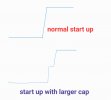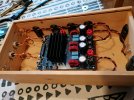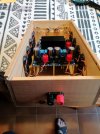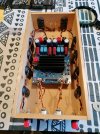I'm thinking...
Case:
ghent audio case (140 usd)
Amplifier: 100- 150 Euro
SMPS:
Micro Audio SMPS (130 USD) or the one suggested
earlier (45 Euro). The Micro audio one is pretty big but would allow addition power for the RCA to XLR
RCA to XLR (13 Euro) if you need it (or
neurochrome if you want top of the line 150 USD).
Some XLR connectors and binding posts and some cable and its around 400 for the "cheap" one or 570-600 if you went all in.
Maybe someone wants to make some hifi2000 bulk orders.. Just the rear panel would need modification. Case price depends on SMPS size (the Micro Audio one is big but seems like great quality + additional power supply for RCA to XLR boards).
Galaxy case 70 Euro + CAD drawing 50 Euro + 25 Euro (drilling) + 30 Euro engraving(175 Euro)....
+ all the other costs not considered when making DIY hifi stuff that makes it fun..




